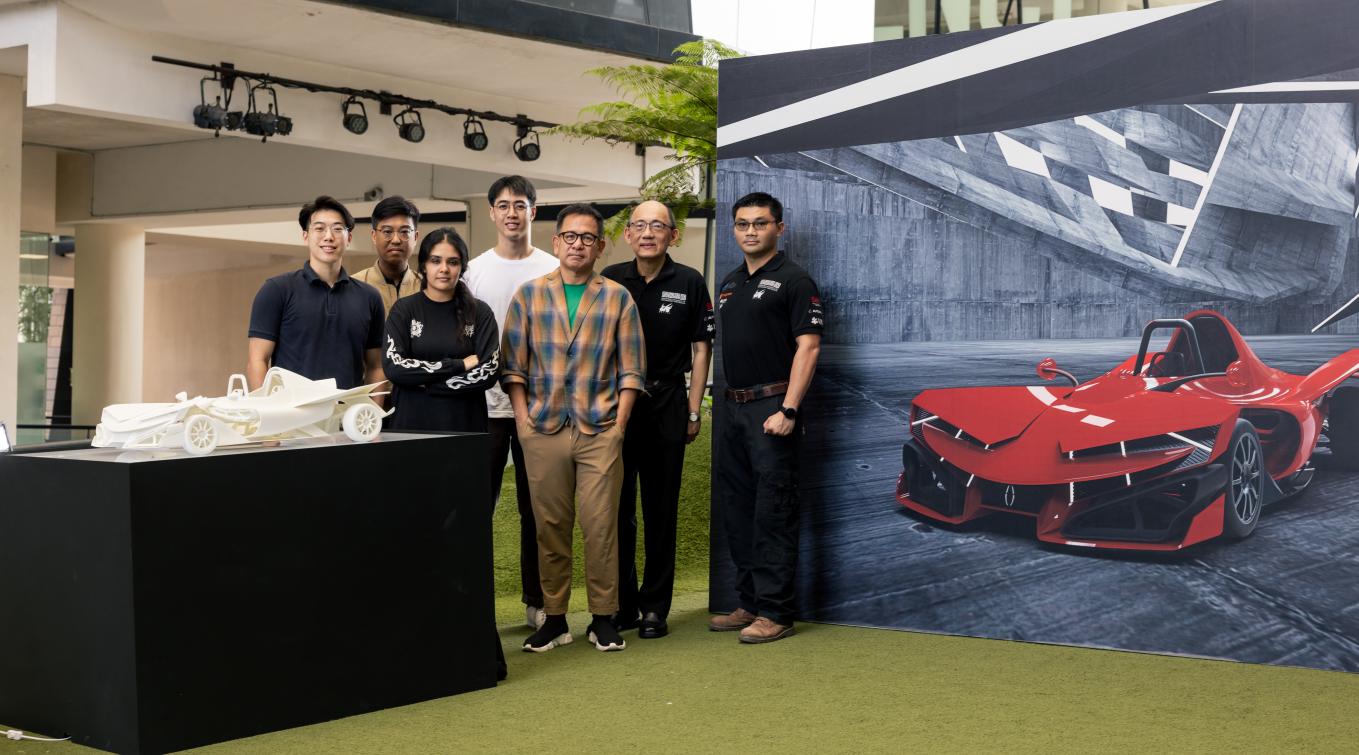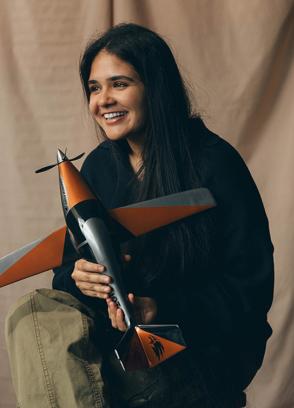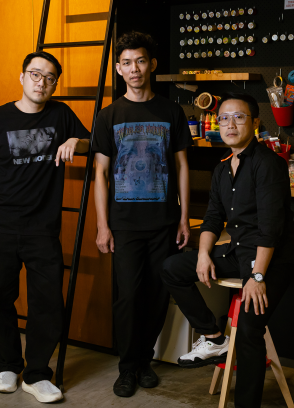LASALLE and SUTD representatives at the Singapore Design Week showcase of Tithonus. (From left to right) LASALLE student Joel Yong, lecturer Nicholas Ooi, students Namjot Kaur and Choong Yu Haun, Programme Leader Nathan Yong, Professor Lim Seh Chun, Advisor, Special Projects, SUTD, and Liew Zhen Hui, Senior Specialist, Fabrication Laboratory, SUTD.
Third time’s the charm for BA (Hons) Product Design Year 3 student Joel Yong, who, thanks to the pandemic, had to experience three tumultuous first years of design school across the UK, Malaysia and Singapore before finding his fit at LASALLE.
This tenacity to forge ahead comes in useful for Joel as he works on his capstone project which investigates how legos can be used to grow coral artificially. “The pressure is always on, I'd say, because 20% of our work is the design while 80% is actually all the thinking that goes behind it.”
Design opportunities in the real world
Bolstered by a bevy of deep-dive industry experience modules, Product Design students have the opportunity to work creatively and practically with household names like Kohler, Razer, Samsung and more.
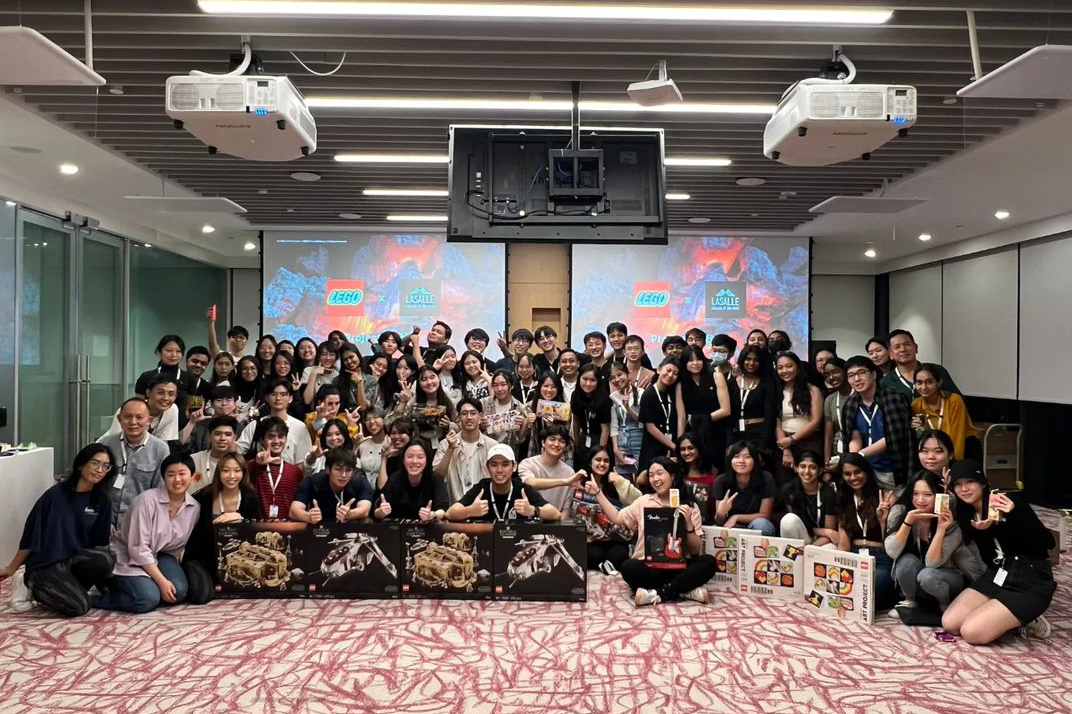
Joel himself was fully immersed in the world of LEGO in his second year at LASALLE. Under the guidance of the creative teams from both LEGO Singapore and LEGO Billund, Denmark, Product Design students teamed up across levels to ideate, with seniors taking the lead in the weekly development of concepts and incorporating feedback from LEGO creatives in an environment that thrived on playing to learn and learning to play.
Joel explains, “Industry exposure really opened up my mind to possibilities. Under the umbrella of design is communication, ideation and then execution. That’s what I enjoy. It’s not just, ‘Okay, here's my problem. Solve it.’ It’s actually: can you make things fun? Can you make things easier? Can you make the user experience flow better? Can people find meaning in the end product?”
Mentorship and design mantras
Joel’s latest project was Tithonus – an eco-conscious, fully operable electric vehicle made in collaboration with SUTD’s Electric Vehicle Club for Singapore Design Week 2023. He was mentored on the project by Programme Leader Nathan Yong, who brings with him years of industry experience and knowledge as co-founder of homegrown furniture retailer Grafunkt.
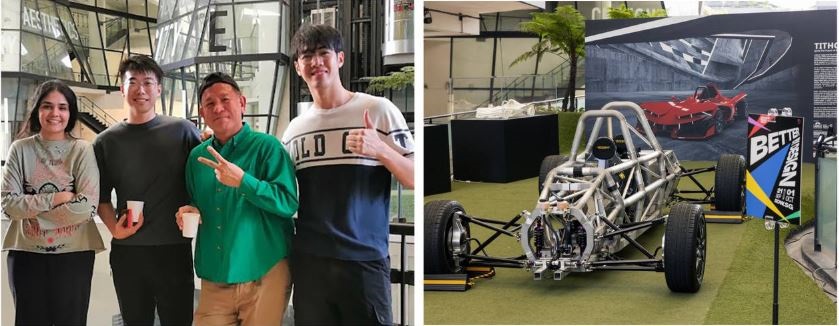
Through this process, Joel has also picked up his roll-with-the-punches attitude to embracing mistakes. “Working on Tithonus with Nathan showed me a lot about the way he works,” comments Joel. “Coming in, we tend to be perfectionists who obsess over details. At times you think, ‘This design has to solve a world crisis’, when at some point you have to make something tangible. So sometimes your first attempt is ugly or off-topic. Nathan would concede that first tries could be ugly, but they didn’t have to be problems yet. That was a game-changer.”
Hear the rest from Joel, who just wrapped his latest public-facing project at Gardens by the Bay and is now in the final year of his studies.
You mentioned how Product Design can be very exacting, and not all fun and games. What were some of the challenges you faced in the beginning?
Coming from the UK and Malaysia, it was a culture shock. The UK was very foundational, while Malaysia was very project-based. Singapore was a whole new ballgame. My international friends and I struggled at the start because you are expected to come in with some 3D programming background. In Singapore, most students come from polytechnic courses in design or design-adjacent fields, so they already have some fundamentals. If you’re not at that level, you have to self-study to at least be on par. I ended up enjoying my time, but there was a lot of groundwork that I had to do.
How did you find the motivation to keep pushing forward?
Industry collaborations here feel like big opportunities. In Malaysia I teamed up more with students from sister disciplines, while in the UK, we seemed to work more with manufacturers to fabricate a product. At LASALLE, though, I could talk to industry leaders and really work with them. In just my first year we already had a chance to do a project with Changi Airport to develop benches for public areas in the newly renovated Terminal 2.
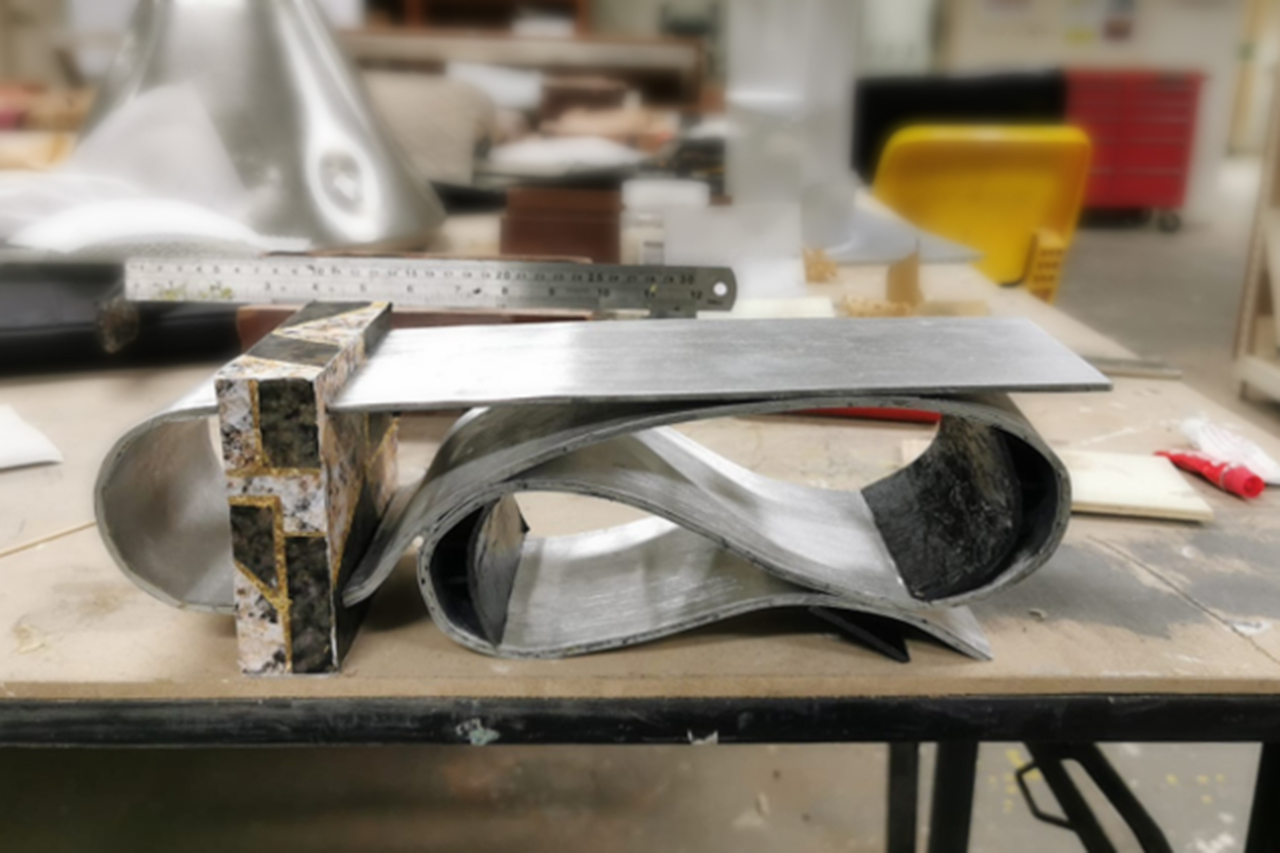
I’m motivated by the opportunity to do real work, good work. Unlike in the UK or Malaysia, I was actually working directly with real industry personalities on a real brief. I appreciated being trusted to practise creativity where I wasn't just being handed a problem, but had to deal with the question of what I could create for them.
I am also thankful that I have very helpful friends. We play to each other's strengths. I consult them when I need help, especially when it comes to the CAD (computer-aided design) side of things where I'm weak. If another friend struggles with another aspect, we assist each other as best we can.
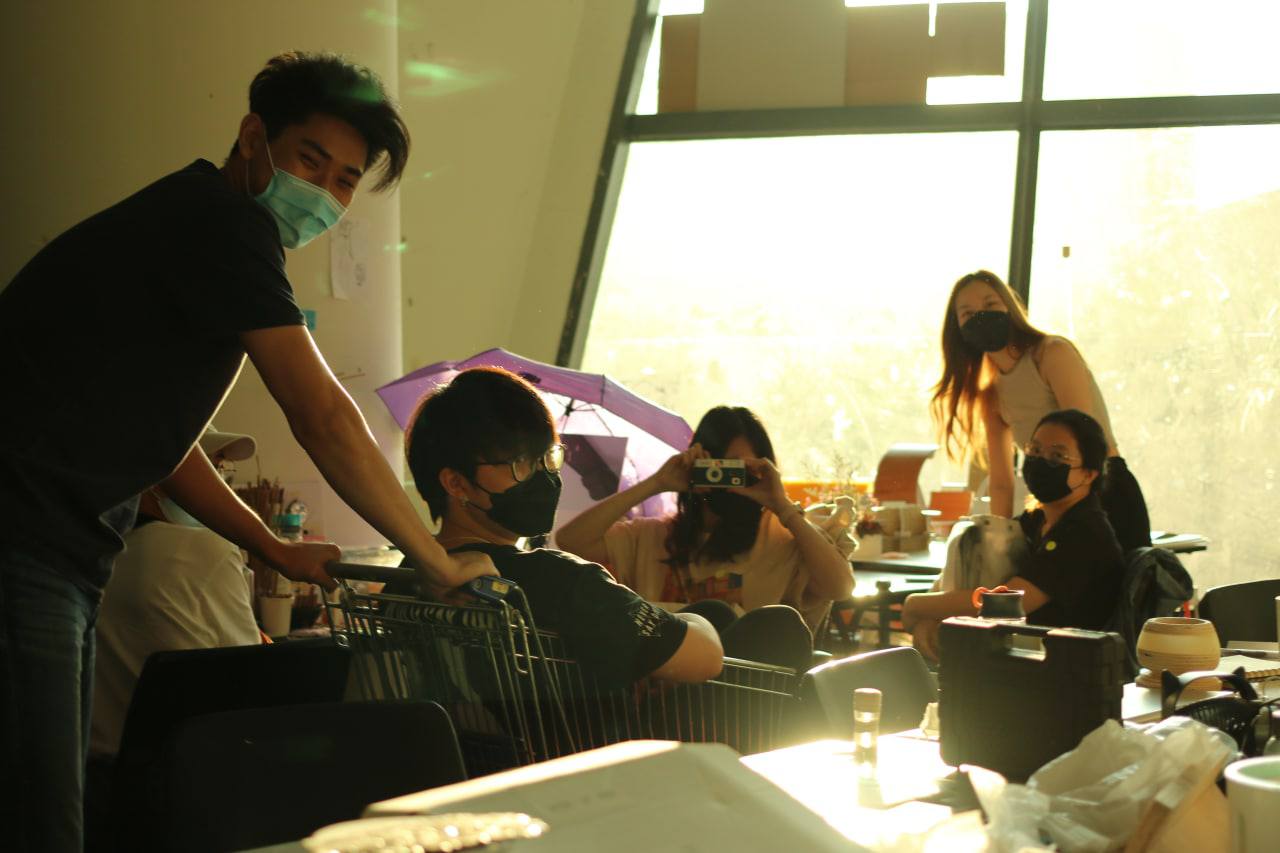
So what’s a day in the programme like?
Say you get a project to design a toy for visually-impaired children. Your material is wood. Now design! You’re thrown into uncharted territory with a lot of parameters. You start by trying to understand design for the visually-impaired. Then, you have to consider how you should use wood – what the strengths and limitations are of wood and if you can implement that in the workshop.
Sometimes products address implicit societal norms and challenge assumptions. Why are there gender divisions when designing some common products and appliances? Is it because of safety? Culture? Or because of our conceptions of hygiene? We have to consider change from all angles: can design challenge any of these assumptions or fix these gaps in understanding?
There’s always a human aspect, because otherwise you’re designing something that's dead. It's the story behind that creates meaning, you know?
How has the programme prepared you for the future?
This programme has prepared me for the industry standard, and I feel tried and tested, prepared for what’s to come in the working world.
Throughout this degree programme, I’ve learnt that design is really about your way of thinking. Our lecturers expect us to have an in-depth understanding of our topics, to thoroughly consider all issues, to have the autonomy to decide when consideration and research are complete and when design should start. It’s challenging, but they want us to have that professional mentality where we take full responsibility and accountability for our projects.
My time here has also connected me with a diverse range of people. If I've got this particular LEGO-related problem, I've got a connection at LEGO. If I’ve got a marine biology problem, I've got this other connection.
Any advice for prospective students considering pursuing this programme?
Know that Product Design goes beyond just art or design. It’s more nuanced than you might expect, and challenges you on communicating your ideas, consumer psychology, even marketing.
Everybody does their best. Everybody has an identity crisis, we stress over our work, we find fulfilment. It's really about the way of intellectually approaching things and doing good work for yourself.
Apply now for our undergraduate programmes.

